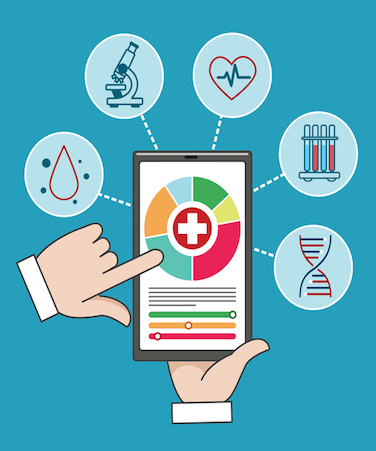A CUNY Graduate School of Public Health and Health Policy (CUNY SPH) team of researchers has published an assessment of a geovisualization dashboard, known as the Ending the Epidemic (ETE) Dashboard, a critical tool used to track the State of New York’s progress towards reducing new HIV infections. The team, consisting of faculty members Denis Nash and Ashish Joshi, who is also the Associate Dean of Students, along with doctoral student Chioma Amadi, Benjamin Katz, project manager at CUNY Institute for Implementation Science in Population Health (CUNY ISPH), and Sarah Kulkarni, associate director of CUNY ISPH, describe the design, development, and usage analysis of the dashboard in an article published in the journal JMIR Public Health and Surveillance.
Increasingly dashboards have been used in clinic-based interventions, and are now being used in population-based interventions, especially in disease assessment. This dashboard tracks several metrics to assess New York State’s progress on the ETE Initiative, a plan launched by the governor’s office in 2014 to reduce new HIV infections in the state of New York from 3000 per year to 750 per year by 2020.
“The End the Epidemic Dashboard System is an interactive platform facilitating data integration, data analysis and data visualization of HIV trends in the state of New York to address needs of diverse stakeholders for informed decision making,” explains Dr. Joshi.
The ETE dashboard was adapted from an existing human-centered geovisualization platform, SanaViz, an Internet-enabled, interactive app incorporating principles of human-centered design and cognitive fit theory to enhance visual exploration of population health data. Usage evaluation of the ETE geovisualization dashboard was conducted using Google Analytics over a four-week period from March 19 to April 18, 2016. The aim was to monitor user activity and analyze traffic on the dashboard using evidence-based metrics that can provide adequate feedback to enhance its utilization. Usage was characterized based on three metrics: (1) number of unique visits to each page, (2) average time on each page in seconds, and (3) page bounce rate (i.e., percentage of visits where user left the site immediately after viewing just a single page). Further analysis was conducted by cross-tabulating specific usage metrics.
Usage statistics indicate that for the 860 sessions assessed, the average viewing time was 8 minutes, 51 seconds, and the bounce rate was 46 percent. These statistics reflect positive results given that prior literature estimates an average session duration of 10 – 20 seconds and a bounce rate of 40 – 60 percent for most websites. Key findings from the study showed that the highest bounce rates at 65% were seen for the “About” page of the ETE website, which describes the ETE initiative. The lowest bounce rates at 17% were seen for the ETE blog page, consistent with prior research on website usage metrics that indicate that blog pages are often the most frequently viewed pages on web portals.
The team’s findings reveal the potential of Google Analytics as a tool to enhance user traffic and performance of the ETE geovisualization platform by using feedback from regular monitoring of key parameters including page bounce rates and average time on page. It also identifies the need for a follow-up usability assessment of the system.
Discussing the impact of the dashboard Dr. Nash says, “It has been incredible to see the integration of data silos as well as the engagement of community stakeholders and users that has happened as a result of New York’s Ending the Epidemic Dashboard System over the last few years. I believe the ETE Dashboard is succeeding at curating useful data and putting it at the fingertips of anyone who wants to know more about New York’s HIV epidemic, especially as it relates to the ETE initiative. New York’s capacity to comprehensively monitor the progress of the ETE initiative, and take action state wide, citywide, and in local communities, has been greatly augmented by the ETE Dashboard system.”




